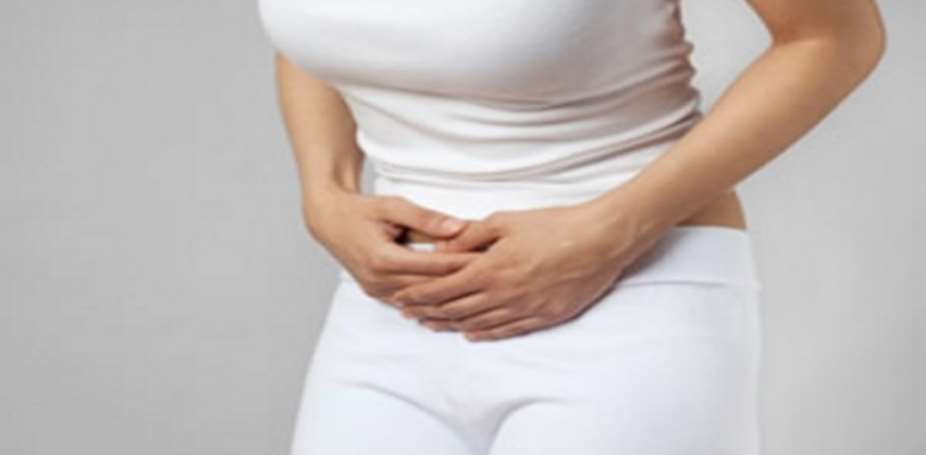Menstrual cramps are the leading cause of absenteeism in young females. About one-half of young females experience some degree of menstrual pain. Incidence of painful menstruation increases with one's gynaecological age.
PRIMARY DYSMENORRHEA
Adolescent girls typically develop painful menstruation, 1-2 years after menarche (first menstrual bleed). This is because primary dysmenorrhea occurs with ovulation. Ovulatory menstrual cycles begin 1-2 years after menarche.
With the increase in Prostaglandins levels in the endometrium (inner lining of the wall of the womb) the uterine muscles contract more strongly, decreasing uterine blood flow and thus, causing pain. Systemic symptoms are also due to prostaglandins.
RISK FACTORS:
- Females who have never been pregnant
- Females who smoke cigarette
- Females with heavy menstrual bleed
SYMPTOMS OF PRIMARY DYSMENORRHEA(Prostaglandins)
- Lower abdominal cramps
- Nausea, Vomiting and Diarrhea
- Low back and Upper thigh pain
- Urinary frequency
- Headaches, Nervousness, Sweating
TREATMENT OF PRIMARY DYSMENORRHEA
2 available methods of controlling primary dysmenorrhea:
- Block prostaglandins production, or
- Block ovulation
The uterine pain can be reduced with prostaglandin synthase inhibitors like Ibuprofen, naproxen and other NSAIDs.
NSAIDs (examples: Ibuprofen, Naproxen) are the preferred pain medication for painful menstruation
- Ibuprofen 200-600mg every 6-8 hours
- Naproxen 275mg every 6-8hours
These medications are most effective when started at the first sign of menstrual flow.
Oral Contraceptive Pills (OCP)
25% of painful menstruations may not improve with NSAIDs. A trial of Oral Contraceptive Pills may be used to suppress ovulation. It may take 2-3 cycles before OCP work effectively to reduce menstrual pain. OCP Block ovulation
DEPO-PROVERA (Depot medroxyprogesterone acetate) can be given intramuscularly, every 90 days, to block ovulation.
SECONDARY DYSMENORRHEA
Painful menstruation is related to a pathology in the pelvis. Once the underlying condition is treated, the menstrual pain usually goes away.
Secondary Amenorrhea usually starts after 20 years of age
The pain is not crampy, the pain is dull and constant
Common causes include:
- Endometriosis
- Pelvic infections
- Uterine outflow obstruction
ENDOMETRIOSIS
Functional endometrium (tissue that normally lines the inside of the uterus) gets seeded and grows outside of the uterus, and may be found on the surfaces of other organs in the pelvis, the intestines, and very rarely, on the skin
The young woman may present with painful menstruation, that does not respond to NSAIDs and OCP.
The Pain is not cyclic and menstrual bleed may be irregular. There may be associated abdominal discomfort, bloating, Painful intercourse and tenesmus (inclination to empty the bowels) and anal pain.
PELVIC INFECTIONS
Pelvic infections may lead to acute painful menstruation.
Signs of infection, such as Fever, chills, bodily aches are present at the time of menstrual flow.
Women often develop chronic pelvic pain, as a consequence of pelvic inflammatory diseases.
Physicians treat Pelvic infections with Antibiotic. Adequate treatment may require hospital admission for the teenager
OUTFLOW OBSTRUCTION
Teenagers with history of surgery, including, abortions, may have outflow tract obstruction. Fibroids are rare in women under 20 years, however, if the bleeding is heavy, prolonged or associated with passage of clots, fibroids may be more likely.
Those with Secondary dysmenorrhea need to see a physician. An ultrasound of the uterus may be done to look for abnormalities of the womb.
Endometriosis is usually confirmed with a Laparoscopy
WHEN TO SEE A DOCTOR
- Excessive menstrual bleed, requiring more than 1 pad per hour
- Menstrual cramps getting more painful and lasting longer than usual.
- Sudden pain that is worse and different from the usual pain
- Signs of infection, such as Fever, Chills, bodily aches are present at the time of menstrual flow.
EVENTS REQUIRING EMERGENCY EVALUATION
- There is Dizziness when she stands upright
- Fainting episodes
- A sudden intense lower abdominal pain, that is made worse in the upright position
- Passage of unusual materials in the menstrual flow.
These could be an ectopic pregnancy or a miscarriage and urgent evaluation may be required.





 We’ll no longer tolerate your empty, unwarranted attacks – TUC blasts Prof Adei
We’ll no longer tolerate your empty, unwarranted attacks – TUC blasts Prof Adei
 Bawumia donates GHc200,000 to support Madina fire victims
Bawumia donates GHc200,000 to support Madina fire victims
 IMF to disburse US$360million third tranche to Ghana without creditors MoU
IMF to disburse US$360million third tranche to Ghana without creditors MoU
 Truck owner share insights into train collision incident
Truck owner share insights into train collision incident
 Paramount chief of Bassare Traditional Area passes on
Paramount chief of Bassare Traditional Area passes on
 Two teachers in court over alleged illegal possession of BECE papers
Two teachers in court over alleged illegal possession of BECE papers
 Sunyani: Victim allegedly shot by traditional warriors appeals for justice
Sunyani: Victim allegedly shot by traditional warriors appeals for justice
 Mahama vows to scrap teacher licensure exams, review Free SHS policy
Mahama vows to scrap teacher licensure exams, review Free SHS policy
 Government will replace burnt Madina shops with a new three-story, 120-store fac...
Government will replace burnt Madina shops with a new three-story, 120-store fac...
